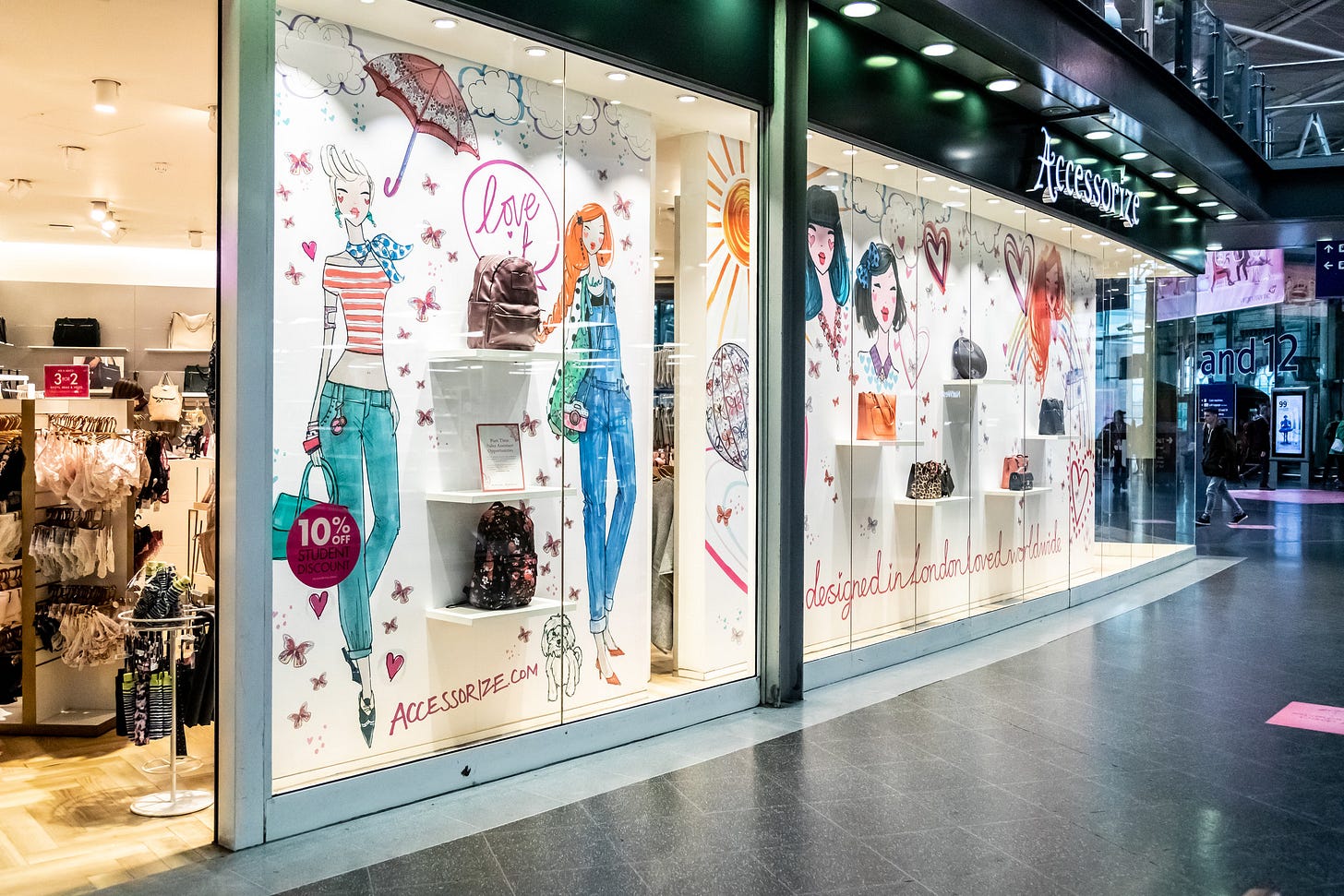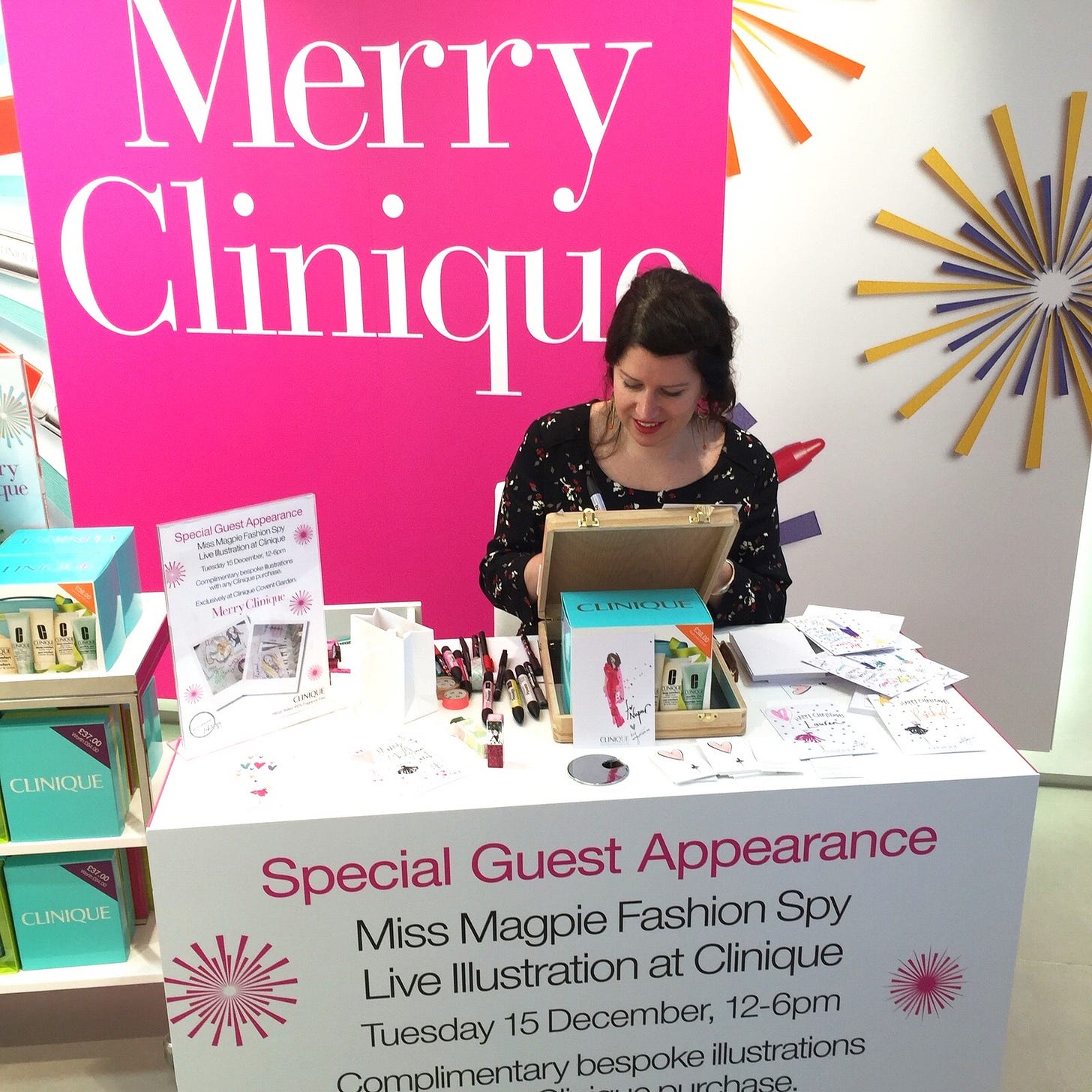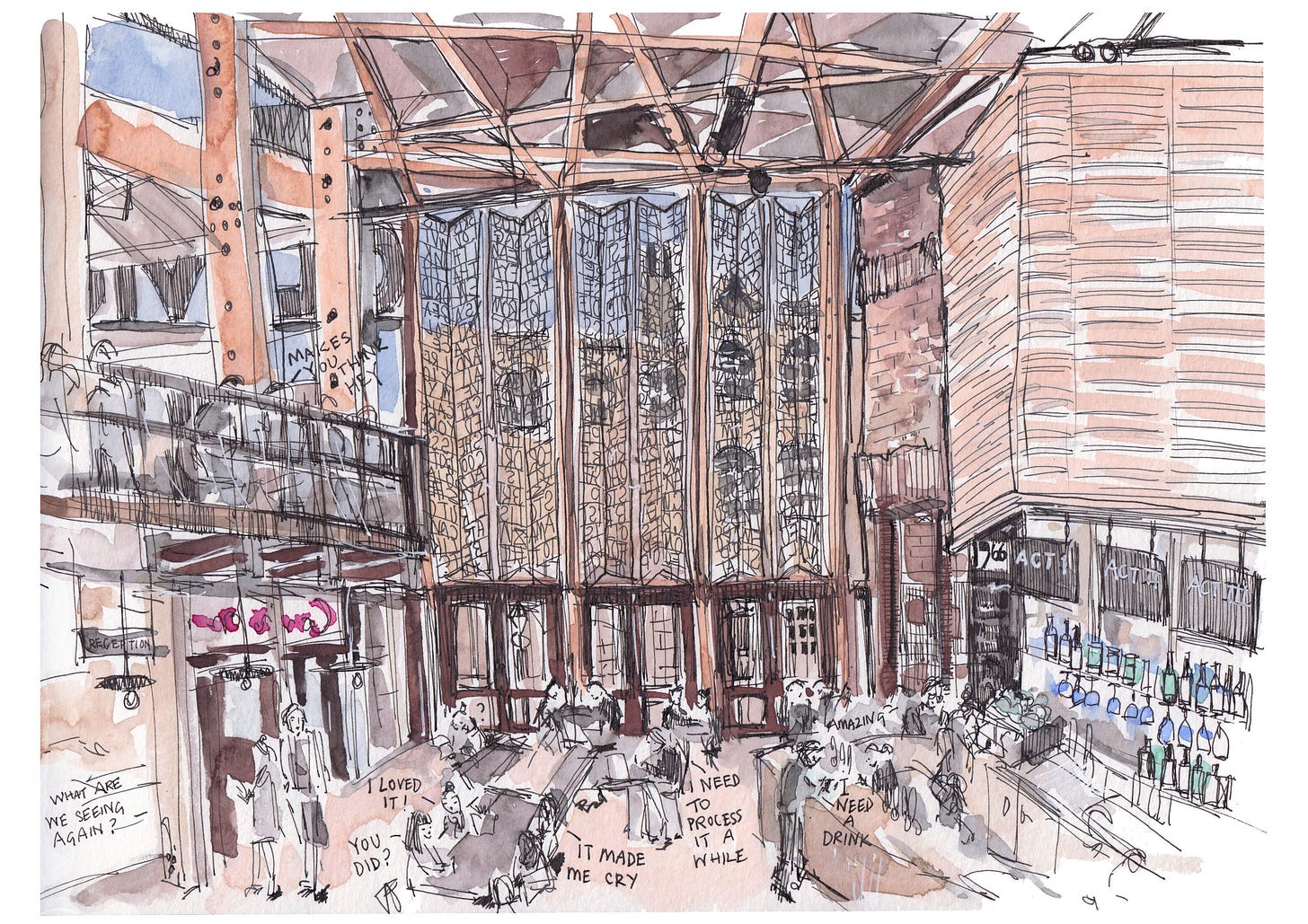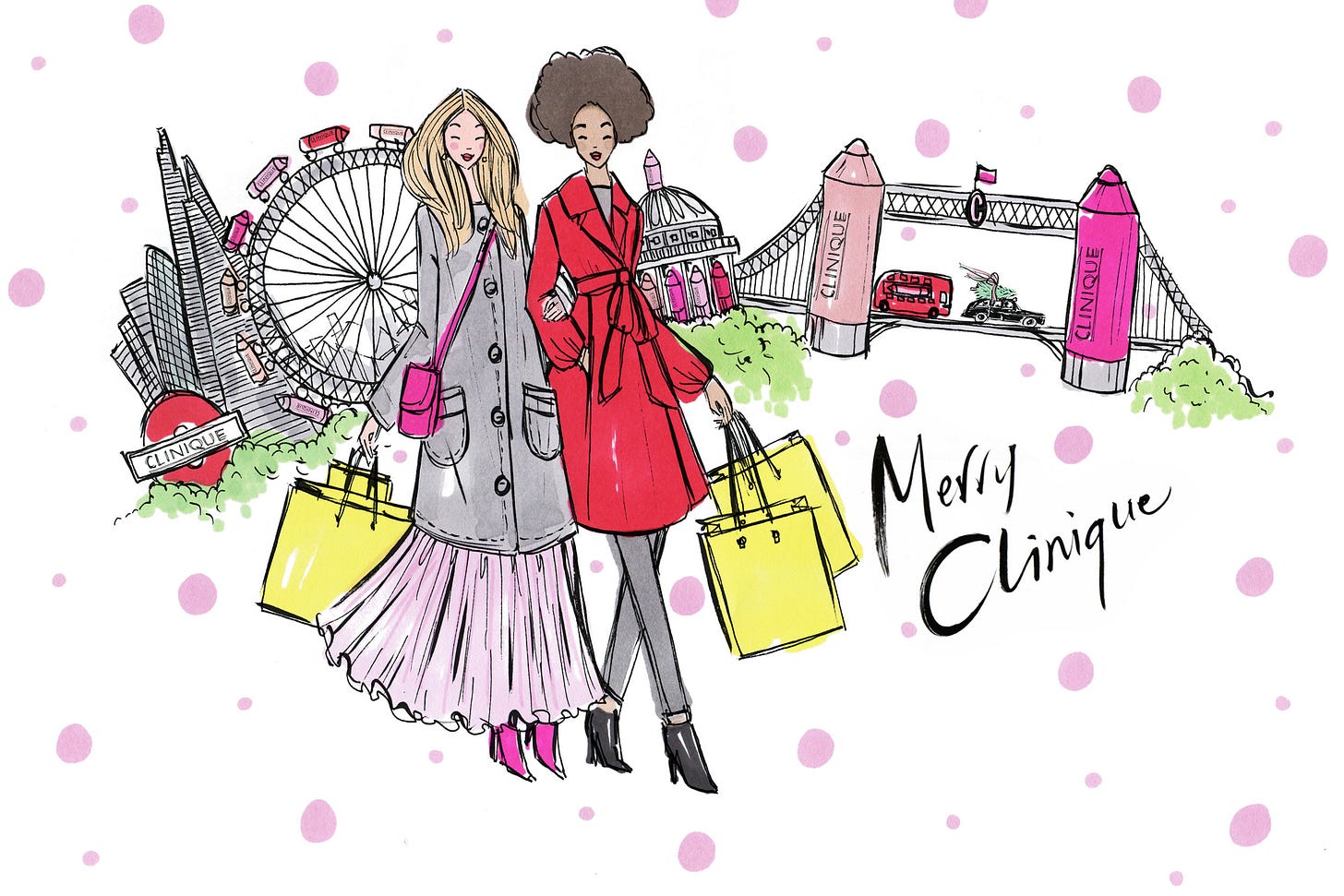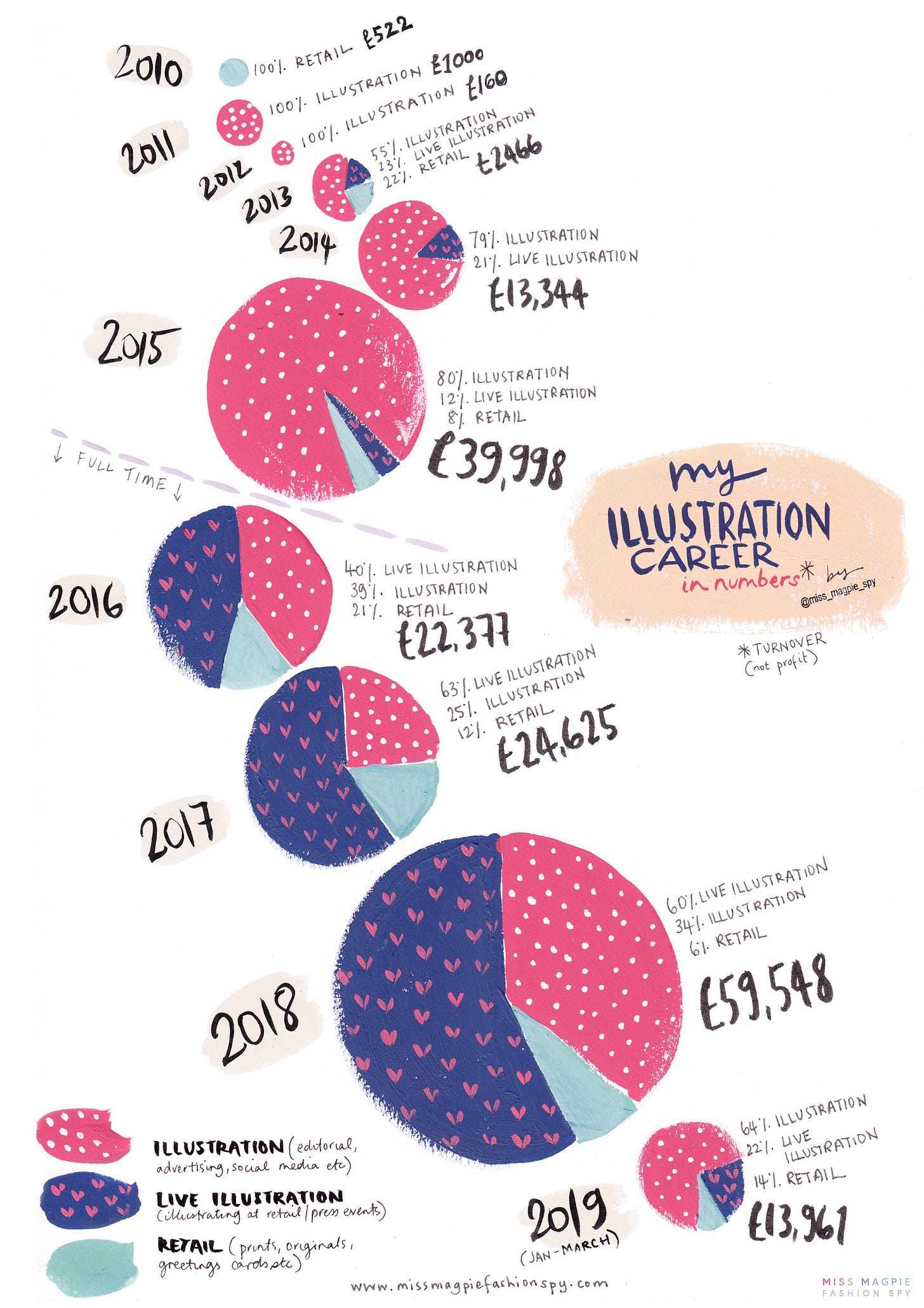(post from 21 March 2019)
Three years ago I turned my back on a successful career in fashion design and at the age of 39 became a full-time illustrator. I wasn’t sure if I’d be able to support myself, but I’m spontaneous and I’m determined and so I went for it. But what could I expect to earn, how little could I survive on and what would I do if things went wrong? I couldn’t find this information anywhere, and so I just decided to dive in, be adaptable, work hard and cross my fingers.
Fast forward a few years and I’m now in a position where I am willing to be open about my earnings, with the hope that this information is useful to other people. Perhaps someone of school age will show it to their parents, maybe it’s something for graduates to read or it could be just the thing for someone who is thinking of a career change.
I’m hoping this will be a regular piece too, a place where other freelance creatives will share their earnings and career history for the benefit of others (and in turn a great showcase about them and their work). It’s not an easy thing to be a part of, it is opening up your finances to the scrutiny of others and it makes you think about how closely you associate success with money too. It’s surprising how discussing cold hard cash in the open air can conjure up such strong emotions.
And so do read below, as I ask myself some questions (not as unusual as you may think), about all things money.
Can you tell me a little about your career path?
I did an Art Foundation in 1995 at Winchester and then a BA (Hons) Fashion Design at Manchester Met. I had a brush with the illustration industry in Australia in 2000 and had some lovely commissions there, but on my return to the UK I couldn’t get a break and so pursued my career as a fashion designer. My longest stint was as a Senior Designer at Monsoon, and I went on to be Head of Design at Nomads Clothing on a freelance contract.
In 2011 I decided to launch a trend website alongside my design work, called Miss Magpie Fashion Spy Ltd where I would report on what was happening around the world in terms of all things style. I created reports full of photos and illustrations to sell to small retailers and factories. I didn’t get the business far off the ground, but I started using the social media handles I’d set up to share my illustrations, which were at that point a hobby.
I was featured in Grazia mag in 2012 for my catwalk-quick-draws and slowly started attracting commissions which I did alongside my job.
In 2015 I got a dream commission, a huge worldwide campaign with Accessorize. This changed everything and made me realise that illustration could be lucrative. I went full-time in January 2016.
What kind of illustration work do you do?
My work is playful, colourful and feminine and so works well for fashion and beauty. I’ve worked with brands such as Clinique, Molton Brown, MaxMara, Kate Spade, and Liberty.
As well as packaging and editorial commissions I do a lot of live illustration work at events. I also do some influencer work as have a good social media following.
My work is developing though, I’m really interested in reportage work and I’ve discovered a love for drawing buildings and scenes.
Have you been able to support yourself as a full-time freelance illustrator for the past 5 years?
Just about. The money I earnt in 2015 was added to other savings (I’d been saving slowly for over 15 years) and I bought a house in Bristol. From that point onwards I had no savings and a mortgage and so 2016 and 2017 were tough, and I ended up deep in an overdraft in 2017. However. 2018 was a great year, and so I’ve paid off my debt and seen a financial advisor who has helped me put a plan in place to help when things go quiet again. I’ve also started paying in to a pension.
In 2017, when things were difficult, I diversified and did a bit of social media strategy, some freelance fashion design and some teaching. It’s good to have other things to fall back on - there is no shame in it.
It’s also important to mention that back when I studied in the 1990s I got a full grant and didn’t leave with huge debt. I’m very aware of how that’s no longer the case, and I really feel for young people nowadays. It’s another reason why I feel I should be sharing what I know.
How does the thought of being open about your earnings make you feel?
A little nervous because I worry people will look at 2018 and think I’m now in a very comfortable position. I hope people realise these numbers are turnover, and there are a lots of expenses to come out of the amount below.
As an example over 1k on accountancy, over £2k on office rent, and then art supplies, technology, travel, marketing, website, postage etc. Then the total profit is taxed.
How do you manage your money?
Miss Magpie Fashion Spy is a ltd company so I use an accountancy firm, they costs me around £1200 per year. I used to have a book-keeper but I do that myself now.
I’ve always been really good with money, so I’m lucky in that respect.
How do you know what to charge for jobs?
I have a rough idea now from experience, but I always sense check things with the AOI.
Do you have an idea of what you’d ideally like to earn each year?
Ideally I’d like to be turning over £45-50K per year. This would allow me to not have a lodger in my house, to save, and to spend money on travel too.
Last year I took nearer £60k but I worked too much and was exhausted, I’d like more of a balanced life.
Illustration can be lucrative, have you any examples of this that you’d like to share?
The Accessorize job was my major lucrative job. I did an illustrated window design that went worldwide and then created artworks that were to become permanent fixtures of some of their UK stores. They asked to see me and spoke about the range of the job and I knew I was out of my depth. So I called Dutch Uncle agency and they worked with me on a consultancy basis, and managed this and some other jobs for me.
Payment for this work was in the tens of thousands.
Do you have a pension or any insurance such as critical illness insurance?
I have both after seeing a financial advisor last year, who is a friend of mine (Frank McMillan)
What advice about finances would you like to share with illustrators who are new to the industry?
I’d suggest putting 30% of every invoice payment away in to a savings account immediately so you have your tax saved. If you do private commissions, don’t charge what you think people will want to pay. Instead work out your time, what you need to earn to live from, and work the price out from that. You don’t exist to create cheap portraits for your friends and family!
Be aware that you’ll only spend around 130 days per year doing paid work. I want to be earning about £45k per year so that means I need to make sure I'm earning money that works out to around £350 per day. As soon as you start accepting work for £100 that will take you a couple of days you are looking at earning £6.5k a year. I don't ever charge a day rate as I charge a license fee, but it's good to do a sense check sometimes.
Also be aware things take time. It takes years to build a business, don’t feel disillusioned if you’re still struggling after a few years.
What does your career look like, in numbers?
When illustration was something I did on the side of fashion design, the numbers were as follows. Please note this is all turnover, not profit.
2010 £522, 2011 £1000, 2012 £160, 2013 £2466, 2014 £13,344, 2015 £39,998.
Since being full time, as follows.
2016 £22,377, 2017 £24,625, 2018 £59,548 and so far Jan - March 2019 I have taken £13,961.
I’ve shown this numbers visually below (helpful, right?!).




